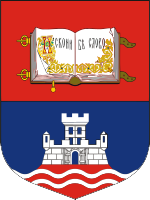
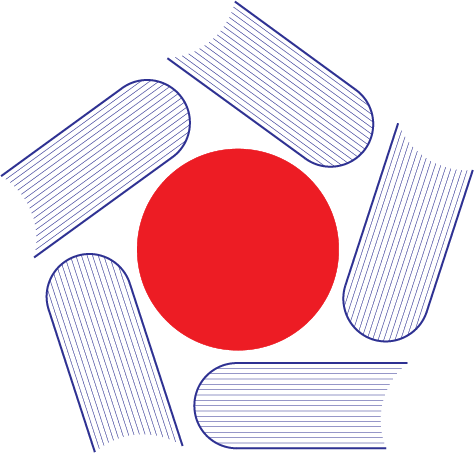
+381(11)3555258
office@imsi.bg.ac.rs

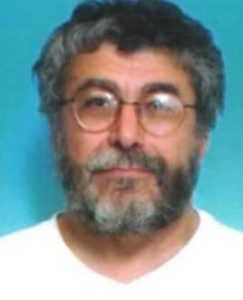 PhD Željko Vučinić
PhD Željko Vučinić
Vučinić B. Željko born January 21, 1949 in Belgrade, scientific advisor, graduated from the Faculty of Science, University of Belgrade in 1971. He received his master’s degree from the Center for Multidisciplinary Studies of the University in 1975. He received his doctorate from the Faculty of Biology, Faculty of Science, University of Belgrade in 1989.
Professional activity: in the middle of 1973 he got a job at the Maize Institute “Zemun Polje”. In the fall of 1990, he transferred to the Center for Multidisciplinary Studies at the University of Belgrade, where he was Head of the Laboratory for Biophysics and Neurosciences until October 1992, when he was appointed Assistant Federal Minister of Science and Technology.
The most important scientific results: he published 51 scientific papers and had over 100 presentations at domestic and international scientific conferences. Membership in scientific organizations: he is a member of the Yugoslav Society for Biophysics. Member of the American Society of Plant Physiology, the Scandinavian Society of Plant Physiology, the European Federation of Society of Plant Physiology and the European Society of Photobiology. He is the President of the Assembly and one of the founders (YUVDI Association). Scientific field of work: biophysics.
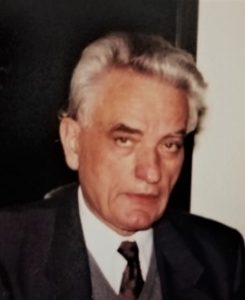 PhD Nikola Jović
PhD Nikola Jović
JOVIĆ Đ. NIKOLA, born on March 31, 1929 in Neštin, municipality of Bačka Palanka. He was a full professor at the University of Belgrade. He graduated from the Faculty of Forestry, University of Belgrade (1954). He received his master’s degree (1963) and his doctorate (1967) from the Faculty of Forestry, University of Belgrade.
Professional activity: Management of game breeding “Jelen”, (1954-1960), manager of the hunting ground “Dobanovački zabran”; Faculty of Forestry, University of Belgrade (1960-1994): assistant (1959-1967), assistant professor (1967-1972), associate professor (1972-1977) and full professor (since 1977). At the Faculty of Forestry; Head of the Department of Forestry (several times), Vice Dean for Teaching (1973-1975); Director of the Institute of Forestry (1977-1979), Dean of the Faculty (1981-1983); also the President of the Faculty Council (several times). He was also the director of the Institute “Dr Ilija Buričić” (1969-1971). At the University of Belgrade, Vice-Rector (1983-1987) and President of the Council for Multidisciplinary Studies (since 1991). He was the director of the Center for Multidisciplinary Studies at the University of Belgrade (since 1991). He was very active in professional and scientific societies in the country, as well as in the International Society of Pedologists.
The most important scientific results: By the end of 1994, he had published about 150 scientific papers; dozens of professional papers, projects, etc., as well as 11 books. Selected University textbooks and monographs: Pedology – (co-authors: M. Antić and V. Avdalović) – the first university textbook in Serbia in forestry pedology, Nauchna knjiga, Belgrade (1980, 1984, 1987, 1990); Typology of forests – (co-authors: 3. Tomić and D. Jović), Faculty of Forestry, Belgrade, 1991; Brown podzolic soils of Serbia, their genesis and classifications, Glasnik Šumarskog fakulteta, special edition, Belgrade, 1973; Types of forests of flat Srem – monographic atlas – group of co-authors, ed. Faculty of Forestry, Geokarta, Belgrade, 1994, etc.
Membership in scientific and professional organizations: He was a member of the Union of Scientific and Biological Societies of Yugoslavia and the Yugoslav Society for the Study of Soil. In both organizations, he served as Secretary-General for several years. Member of the International Society of Indigenous Peoples.
Awards and recognitions: He was awarded the Order of Labor of the Third Order (1959); Order of Merit for the People with Silver Rays (1976); Order of Labor with the Red Flag (1989). He received several plaques, namely: the Plaque of the University of Belgrade; Plaque of the University of Warsaw; Plaque of the City of Belgrade; April 4 plaques of the Student Union of the University of Belgrade – 3 times; Plaque of the Faculty of Forestry in Belgrade, Plaque S. C. Belgrade, as well as through other recognitions, awards, charters, letters of thanks, diplomas, etc. The scientific field of work: Forestry and Protection and improvement of the environment. Within these areas, especially Forest Pedology and Forest Typology.
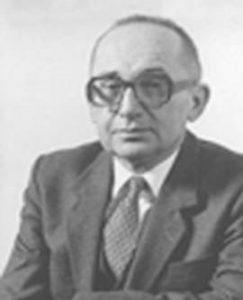 Аccademician Momčilo Ristić
Аccademician Momčilo Ristić
MOMČILO M. RISTIĆ, Honorary Member of the AESS from 1999, full member of the Serbian Academy of Sciences and Arts, was born on July 27, 1929 in Mrčajevci (Serbia). In 1954 he earned his B.Sc. from the Faculty of Technology at the Belgrade University and in 1962 his Ph.D. at the Faculty of Technology and Metallurgy, Belgrade University. The material science is the area of scientific work of prof. Ristić, specifically the Prognostics of material properties and the Physics and Technology of Sintering.
Professional employment: “Cer” plant in Čačak (1955-1959); the Institute of Nuclear Sciences „Boris Kidrič“, Vinča (Head of the nuclear ceramic fuels division) (1959-1974); Technical Faculty, University of Niš (associate professor) (1967-1969); Faculty of Electronic Engineering, University of Niš (full professor) (1969-1974); Indian Institute of Technology, Kanpur – India (foreign member for PhD thesis assessment) (1972-); McQuire University, New South Wales – Australia (member of an professor election committee) (1975-), Faculty of Philosophy, University of Niš (invited full professor) (1976-); Technical Faculty in Čačak, University of Kragujevac (invited full professor) (1978-2001); International Institute for sintering sciences (Editor-in-Chief of the “Science of Sintering” International Journal (1962-); Centre for Multidisciplinary Studies of the Belgrade University (Editor-in-Chief of the “Monograph on material science” edition) (1980-).
He is the founder of the Belgrade School of Sintering. Under his mentorship, 53 doctoral thesis were defended, as well as 106 Master of Science thesis, and specializations of young scientific professionals from Serbia, Russia, Ukraine, Sweden, Poland and Czechoslovakia (1982-).
He has published 922 scientific papers, 488 of which in international and 434 in domestic journals, as well as 32 books. He was the president of the Organizing Committee of 10 World Round Table Conferences on Sintering.
Academician Ristić is the member of a number of academies (Full Member of the Serbian Academy of Sciences and Arts, Foreign Member of the National Academy of Sciences of Ukraine, Foreign Member of the Russian Academy of Technological Sciences, Foreign Member of the Macedonian Academy of Sciences and Arts, Honorary Member of the Academy of Engineering Sciences of Serbia, general Secretary of the International Institute for the Science of Sintering, Honorary Member of Serbian Chemical Society, Honorary Member of the International Biography Institute, fellow of the American Ceramic Society, Honorary Member of the Association of Physico-chemists of Serbia, Honorary Member of ETRAN, Full Member of the American Institute for Dust Metallurgy, member of the International Biography Society, Honorary Member of the International Biographical Centra of the USA, fellow of the Internation Biographical Society of USA.
He was awarded with a number of renowned prizes and awards for scientific contributions: the Silver Plaque of the City of Belgrade for 1975, the Plaque of the Niš University, the Plaque of the German Academy of Sciences, the Frenkel Prize, the Plaque of the Lehigh University, the Plaque of the Max-Planck Institute, Honorary Diploma of the Polytechnic Institute in Kiev, Honorary Diploma of the International Institute for the Science of Sintering, Medal of the International “Golden Fortuna” Academy, the Golden Badge of the Polish Metallurgy Engineers Society, the Charter and the Plaque of the Faculty of Electronic Engineering, Niš University, the Plaque of the Centre for Multidisciplinary Studies of the Belgrade University, the Charter of the Serbian Chemical Society, The Plaque of the Science centre for electronic materials, Warsaw, Honorary Diploma of the International Biographical Institute (Oxford), etc.
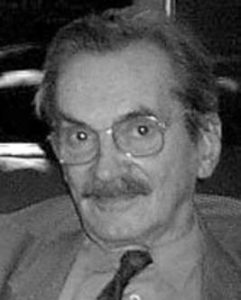
Аccademician Radoslav Anđus
Radoslav K. ANDJUS, Ph.D.
CURRICULUM VITAE
Consulting member, Human Adaptability Committee, International Biological program – President, Committee for Cryobiology, International Institute for Refrigeration (1967). – President of the Committee for Natural and Exact Sciences, Yugoslav National UNESCO Committee – President of the Committee for Biology, Federal Association for Scientific Research in Yugoslavia
Amer. Soc. of Contemporary Medicine and Surgery, Soc. for Cryobiology, Soc. for Advanced Medicine (USA), Marine Biol. Assoc. (UK), Association des Physiologistes (Paris), Société de Biologie (France), Yugoslav Physiological Soc., Yugoslav Biophysical Soc., Yugoslav Immunological Soc., Serbian Biological Soc. (was President) – Former President of the Union of Yugoslav Biological Societies.
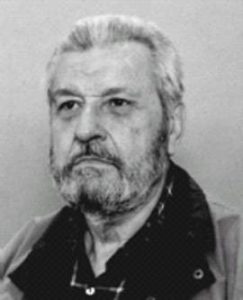 PhD Zvonimir Damjanović
PhD Zvonimir Damjanović
Zvonimir Đ. Damjanović was born on April 16, 1929 in Šavnik, SR Montenegro. He finished high school in 1947 in Belgrade, where he graduated from the III Men’s Gymnasium in the same year. He began his studies of biological sciences at the University of Moscow, and finished them at the University of Belgrade at the Faculty of Biology, where he graduated in 1951. After graduating, he was employed at the Botanical Institute of the Department of Biological Sciences of the Faculty of Science, first as a high school teacher, and then as an assistant from 07.02. 1971.
During 1952/53. he worked at the Experimental Institute of Physiology in London with Professor Gregory, and then at the Institute of Physiology in Gottingen in 1955/56. by Professor Pringsheim. He received his doctorate in 1957 from the biological group of the Faculty of Science, and in 1958 he was elected assistant professor for the subject Phytophysiology at the Institute of Botany of the Faculty of Biology of the Faculty of Science in Belgrade. From 1968 to October 1971, he held the position of Deputy President of the Federal Council for the Coordination of Scientific Activities, and until November 1972, in the rank of Federal Undersecretary. He is the first director and one of the founders of the Center for Multidisciplinary Studies at the University of Belgrade and a professor of Biocybernetics at postgraduate studies at the Faculty of Science in Belgrade.
The Center for Multidisciplinary Studies (CMS) of the University of Belgrade, today’s University of Belgrade – Institute for Multidisciplinary Research (IMSI), was founded following the decision of the Council of the University of Belgrade No. 1481/1 of May 18, 1970, as a scientific-teaching organization of the University. On July 10, 1970, the Assembly of the Republic of Serbia passed a Decision confirming the Decision on the Establishment of the Center for Multidisciplinary Studies (“Official Gazette of the SRS” No. 27/70). By the decision of the District Commercial Court in Belgrade number US-232/70 of September 21, 1970, the Center for Multidisciplinary Studies of the University of Belgrade was registered in the Register of Institutions for the City of Belgrade. At its session held on December 25, 1974, the Council of the Republic Community for Scientific Work of SR Serbia passed a Decision determining that the Center for Multidisciplinary Studies of the University of Belgrade meets the conditions for acquiring the status of a scientific organization in accordance with the Law on Scientific Activities. Finally, on May 15, 1975, the Republic Secretariat for Education and Science passed a decision on the enrollment of the Center for Multidisciplinary Studies of the University of Belgrade with its headquarters in 35, Slobodana Penezića-Krcuna Street in the register of scientific organizations at the Republic Secretariat for Education and Science of SR Serbia. The Institute has been operating under its current name with its headquarters in Belgrade, 1 Kneza Višeslava Street, since October 5, 2007. The founder of IMSI is the Republic of Serbia.
The Institute started working with only 8 employed researchers and 15 additionally engaged professors from member Faculties of the University of Belgrade, and to this day it has become one of the larger institutes at the University of Belgrade with over 100 researchers. By 2005, 770 master’s and 64 doctoral thesis were defended by students of this Center. Appendix 1 lists all master’s theses (a list of all master’s theses can be found at the link http://www.imsi.bg.ac.rs/sr/alumni/), and doctoral dissertations defended at the Center, together with data about the current scientific and other engagements of colleagues who were educated at the Center. The Institute has constantly grown in terms of number and quality of staff during the last 50 years. IMSI has realized a large number of national and international projects, and established cooperation with the economy, public services, the military, world universities and international organizations.
The founders and members of the first Parent Commission of the Center were: Prof. Dr. Radoslav Andjus (full member of SASA), Prof. Dr. Aleksandar Despić (full member of SASA), prof. dr Radivoje Berović (full member of SASA), Prof. Dr. Dragiša Ivanovic (full member of SASA), Prof. Dr. Đuro Kurepa (full member of SASA), Prof. Dr. Vukić Mićović (full member of SASA), Prof. Dr. Rajko Tomović (full member of SASA), Prof. Dr. Zvonimir Damjanović (full member of SASA), Prof. Dr. Zoran Radosavljević, Prof. Dr. Miho Cerineo, Prof. Dr. Vukan Dešić, Prof. Dr. Toma Bunuševac, and Prof. Dr. Jovan Gligorijevic. The idea to establish the Center originated from Prof. Zvonimir Damjanović and Prof. Radoslav Andjus, the “father” of Yugoslav biophysics.
The first director of the Center was Prof. Dr. Zvonimir Damjanović, and later this function was performed by: Academician Radoslav Andjus, Academician Momčilo Ristić, Prof.. Dr. Nikola Jović, Prof. Dr. Željko Vučinić, Dr. Miroslav Nikčević and Dr. Sonja Veljović Jovanović. Dr. Dragica Stanković is now in that position.
The first teachers of the Center were: Prof. dr Radoslav Andjus (neuroscience, biophysics), Prof. Dr. Milorad Bertolino (mathematics), Prof. Dr. Zvonimir Damjanović (biocybernetics), Prof. Dr. Aleksandar Despić (electrochemistry), Prof. Dr. Đuro Kurepa (mathematics), Prof. Dr. Dušan Kanazir (molecular biology and physiology), Prof. Dr. Jordan Pop Jordanov (full member of MANU; nuclear physics, electrical engineering, materials science), Prof. Dr. Milorad Mlađenović (nuclear physics, magnetism), Prof. Dr. Vojislav Petrović (full member of SASA, neuroendocrinology, physiology), Prof. Dr. Ljubiša Rakić (full member of SASA, neuroscience), Prof. Dr. Stanojlo Stefanović (medicine), Prof. Dr. Milutin Stefanović (chemistry), Prof. Dr. Rajko Tomović (robotics, biomedical engineering) and Prof. Dr. Miho Cerineo (nuclear physics) (Figure 1).
Founding an institute with a multidisciplinary character, brought Yugoslavia and the University of Belgrade to the forefront of world science. In the same year (1970) an international conference “Interdisciplinarity in Universities” was organized in Nice by the OECD, which resulted in the following conclusions / guidelines (given here in an abbreviated version):
Science achieves the greatest breakthroughs by multidisciplinary endeavors, achieving previously “unimagined” combinations of diverse knowledge, methods and concepts.
Most multidisciplinary scientific and educational institutions in the world were created much later. In the United States, the Santa Fe Institute and the famous Beckman Institute for Advanced Science and Technology were founded in the 1980s. The Academy for Advanced Interdisciplinary Studies in Beijing and the Interdisciplinary Graduate School of Nanyang Technological University in Singapore were established only after 2000.
Based on the decision of the Ministry of Science and Technology of the Republic of Serbia from December 31, 1993, the Center was registered as a scientific research organization. Interdisciplinary scientific areas have been developed at the Center, where young scientists have been educated through postgraduate teaching and mentoring. By the decision of the Government of the Republic of Serbia of October 4, 2007, the Center for Multidisciplinary Studies of the University of Belgrade was reorganized as a scientific research institution, founded by the Republic of Serbia under the name Institute for Multidisciplinary Research. IMSI was admitted as a member to the University of Belgrade on May 15, 2009 and thus became one of the scientific and teaching bases of the University.
The Center worked to become a bridge between social, natural and technical disciplines (publication: “Center for Multidisciplinary Studies of the University of Belgrade 1970-1995”, Belgrade, 1998). The antagonism towards the multidisciplinary approach and intellectual challenge it carries, which the Institute and its employees have struggled with since its founding (Andjus RK. Scientia Yugoslavica 1986; 12: 251-258), has faded over time. The problems that science needs to solve are becoming more complex and demanding. Big problems require a multidisciplinary approach, and a combination of diverse knowledge provides huge capacities without which great breakthroughs in knowledge are practically no longer possible. The Institute was a pioneer and significantly contributed to the affirmation of the direction in which Serbian and world science is today. The topicality of multidisciplinarity in science is reflected in the national strategy of scientific and technological development (e.g. program of integrated interdisciplinary research) and in the organization of new multidisciplinary centers and study programs at universities in the country, but also in increasingly intensive promotion and application of multidisciplinary approaches in the international scientific community (Figure 3. Special Issue “Interdisciplinarity”, Nature 2015; 525), at leading universities in the world, as well as in the coordination of multidisciplinary endeavors in research and education and the formation of European multidisciplinary research centers. Thus, multidisciplinarity was the focus of the annual sessions and reports of the Global Research Council for 2015 and 2016. It is increasingly emphasized that scientists from different natural, technical and social disciplines must work together to solve challenges facing the world – energy, water, climate, food and health. Such cooperation requires special efforts and active work on overcoming the barriers that exist between disciplines. Technical perfection, a biologically more flexible context, and an understanding of the social implications of the proposed solutions are needed. Perception of the economy is also multidisciplinary. In trying to find a solution to complex problems the economy is not interested in partial possibilities of individual disciplines.
The decision to establish the Center for Multidisciplinary Studies of 18 May 1970 states:
“The Center for Multidisciplinary Studies (hereinafter: the Center) is established as a research-education organization of the University, which will meet the common needs of the associated faculties within the University and other interested organizations and bodies” … “The Center organizes scientific research and postgraduate studies in neurobiology, biomedical ecophysiology, biophysics, cybernetics, surface state physical chemistry, molecular biology and other disciplines that represent synthesis or are on the border between medical, biological, chemical, physical, mathematical and some technical disciplines.”
At the end of 1971, the first master’s thesis entitled “Control of a multifunctional hand prosthesis” was defended at the Center by Zoran Stojiljković, later a professor at the Faculty of Electrical Engineering, University of Belgrade. From December 8 to 11, 1980, the Symposium “Multidisciplinary Sciences and Their Role in Scientific and Technological Progress” was held on the occasion of the tenth anniversary of the Center for Multidisciplinary Studies at the University of Belgrade. In the introductory speech for this Symposium, Prof. Dr. Zvonimir Damjanović also said the following: “Our experience speaks of the direction where the development of science, natural interests of young people and connecting research and education with social practice are heading.” The Center for Multidisciplinary Studies was created and remained to the end complementary to the existing academic system, accessible to all. What has spoken through our university in cooperation with others over the last ten years, is an expression of these aspirations and real social needs “…” In the example of the program of our Center for Multidisciplinary Studies, we have a picture of spontaneous crystallization of major directions, emerging as a natural combination of individual and group aspirations of students and their mentors, social acceptance of certain programs and appropriate social support – production organizations, through health to socio-political community.”
This speaks of the dynamic profile of the Institute, which is ready to respond to social challenges and help develop the planned courses and goals. Since its founding, the Institute has had a multidisciplinary research and education base. Over the years, certain courses were formed and crystallized in accordance with the needs of society and science. It can also be seen that in the seventies, the Center recognized the commercial potential of education as such, as well as the need to connect the economic aspect with high quality education, which is now recognized in higher education in our country. The dynamics of research and education work is best illustrated through the courses and modules that were available to students of master’s and doctoral studies at the Center. Thus, in 1972, available specializations at the Center were: Molecular Biology, Neurobiology, Surface States, Applied System Theory, and Socio-medical Research. By 1976, the teaching and scientific activities at the Center branched out and offered as many as 13 courses (Figure 4).
The program of the Center was formed and improved through feedback from the society, scientific community and students, as well as through close cooperation with other scientific and educational institutions of the University of Belgrade and other universities and social organizations. Cooperation with various institutions was defined by agreements on long-term cooperation. The first such agreement was signed with the Faculty of Natural Sciences and Mathematics (PMF) at the beginning of 1976, and a month later the agreement with the Medical Faculty of the University of Belgrade was signed. The third agreement was signed in early 1978 with the Faculty of Electrical Engineering (ETF). Through these and other agreements, the following courses-fields were formed:
This department was formed at the Center through an agreement signed in 1977 with the Faculty of Medicine in Belgrade, the Institute for Biological Research “Siniša Stanković” (IBISS), and the Institute for Biological and Medical Research of the University of Titograd. This was followed by expansion of cooperation to the Corn Institute “Zemun Polje”, the Faculty of Science – Department of Chemical and Physical and Chemical Sciences, the Institute “Boris Kidric”, SASA, the University Clinical Center and other organizations. Together with the Faculty of Medicine in Belgrade, doctoral courses were formed in the field of: neurobiology and experimental and clinical research of the nervous system, biomedical and clinical engineering, sociomedical research, and general and medical ecophysiology.
The basis for the formation of this department were agreements with the Faculty of Medicine, the Faculty of Science and the Faculty of Electrical Engineering (ETF), and with the Mihajlo Pupin Institute. Since 1982, the Department of Biomedical and Clinical Engineering realized the following tasks for the needs of the City SIZ (self-governing interest community): application of computers in functional clinical diagnostics, application of computers in medical informatics and clinical decision making, application of systems sciences in the selection process, procurement and exploitation of equipment of high technological value and inventory of equipment in all health organizations and data entry into a computer. As can be seen, IMSI was a pioneer in the introduction of information systems in public health in Serbia.
This department was formed through agreements with the Faculty of Architecture, University of Belgrade, the Geographical Institute in Belgrade and the Institute of Social Sciences in Belgrade. Later, the cooperation was extended to the University Clinical Center, Mihajlo Pupin Institute, IBISS, PMF, Faculty of Medicine, Faculty of Dentistry, Faculty of Technology and Metallurgy, Faculty of Veterinary Medicine, Institute of Chemistry, Technology and Metallurgy (IHTM), ETF, and Faculty of Forestry, with which a laboratory was formed and merged. Cooperation was also realized with directly interested subjects, such as “Srbijašume”, “Panšume”, “Lovoturs” and others.
Immediately after it was established, the Department of Materials Science gathered many faculties, institutes and economic organizations of the former state: ETF, Faculty of Electronics in Nis, EI – Research and Development Institute in Zemun, Faculty of Technical Sciences in Novi Sad, Institute of Technical Sciences SANU, Institute of Physics, Institute of Chemistry, Technology and Metallurgy IHTM, Institute for Material Testing of SR Serbia, Mihajlo Pupin Institute, Construction Material Industry in Skopje, Laboratory for Electron Microscopy, University of Belgrade, Mathematical Institute, Faculty of Science, Technical Faculty in Cacak, Electrical Engineering Institute in Zagreb, Faculty of Mining and Geology, Faculty of Technology in Skopje, etc. The department has worked closely with prestigious institutions from the United States, Russia, Germany and India. Prof. Dr. Momcilo Ristic, academician of SASA and one of the directors of the Center specially contributed to development of this Department and its programs.
Population science is also a highly multidisciplinary science related to mathematics and statistics, economics, sociology, medicine and epidemiology, psychology, anthropology and biology. This department was founded in 1971 through cooperation with the Federal Institute for Health Care, with which the Center formed joint services. The research program included the study of the prevalence of chronic diseases in urban and rural populations, the process of aging and old age dependence on risk factors, research in psychophysiology and others.
This program was created through close cooperation with the Mathematical Institute of SASA. Simultaneously with the determination of the curriculum for postgraduate studies, the program of the scientific research project “Computing and Artificial Intelligence” was conceived. The achieved results (about 300 publications) consisted of analysis and standardization of educational programs, development of system software for education, environmental modeling and simulations, etc.
In 1995, the Center provided classes for nine Master of Science modules for University Postgraduate Studies:
By the decision of the Government of the Republic of Serbia of October 4, 2007, the Center for Multidisciplinary Research of the University of Belgrade was reorganized as a scientific research institute, founded by the Republic of Serbia under the name Institute for Multidisciplinary Research. But IMSI remains the scientific research base of the University of Belgrade and individual faculties (Biology, Chemistry, Physical Chemistry, Technology and Metallurgy, Mining and Geology, Electrical Engineering and others) for doctoral and master studies in various fields.
Today’s scientific research and educational activities at IMSI represent a strong echo of the previous 50 years, which shows that IMSI is a scientific research organization with a tradition, transfer and development of knowledge, which develops and forms its own staff (as well as staff of other domestic and international institutions). In addition, new directions of research have been developed and are emerging at the Institute, which contributes to the development and multidisciplinarity of IMSI. The Institute currently employs over 100 researchers in 4 departments:
Department of Biology and Inland Waters Protection
Department of Materials Science
Department of Plant-Soil and Nano Systems and
with the following research directions:
Development of new materials
Plant physiology under stress
Biomedical sciences
Environmental Protection
Fish ecophysiology and aquatic ecosystems
Fungal ecophysiology and biodiversity
According to Scopus, since foundation, as part of the Center for Multidisciplinary Studies and the Institute for Multidisciplinary Research, 191 authors have published over 1,550 scientific papers. A large number of papers were realized in cooperation with 200 different institutions, including the Serbian Academy of Sciences and Arts, Russian Academy of Sciences, University of California, Berkeley to the University of Tasmania. The first paper with the affiliation of the Center was published in 1972, in the prestigious multidisciplinary journal – Biochimica et Biophysica Acta, and dealt with the development of methods (Figure 6).
A list of the first 10 publications originating from IMSI is given below:
Papers affiliated with the Center or IMSI have over 22,000 citations according to the Scopus scientific database, while the Institute’s h-index is 62. The most cited paper was published in the journal Biochemistry, and describes a new method for RNA isolation (Figure 7).
A list of the first 15 papers at the Center or Institute (with affiliation) by citation is divided into the period from its establishment to 1995 and from 1995 to the present:
– published by 1995:
– published after 1995:
From its founding until today, the Center for Multidisciplinary Studies, i.e. IMSI, has had an intensive publishing activity, which is a consequence of the need for postgraduate teaching, but also extremely high quality scientific staff who had the capacity and desire to systematize and transfer their knowledge to the wider scientific community. The Center published independently, or in cooperation with SASA and other leading institutions.
A series of books by prof. Dr. Radoslav Andjus, in which our respected academician and long-term director of the Center represented his career, are still used today as textbooks at the Faculty of Biology (Figure 7).
The Materials Science edition is also significant, with the first book printed in 1983 and the last forty-first book printed in 2000 (Figure 8).
Some of these books were also textbooks for postgraduate studies, and many were mandatory literature. This series was edited by academician Momcilo M. Ristic, who was most deserving for its longevity and content. The Publishing Council of the Program Council for Materials Science was composed of the then most eminent scientists from various scientific fields and branches, many of whom were members of SASA (Figure 1).
In addition to books, collections of papers from scientific symposia organized by the Institute were also published. The center also had its own edition in the field of social sciences and humanities called “Population of Space” (Figures 9 and 10).
University of Belgrade
Institute for Multidisciplinary Research
Kneza Višeslava 1, 11030 Beograd
(+381) 11 3555-258